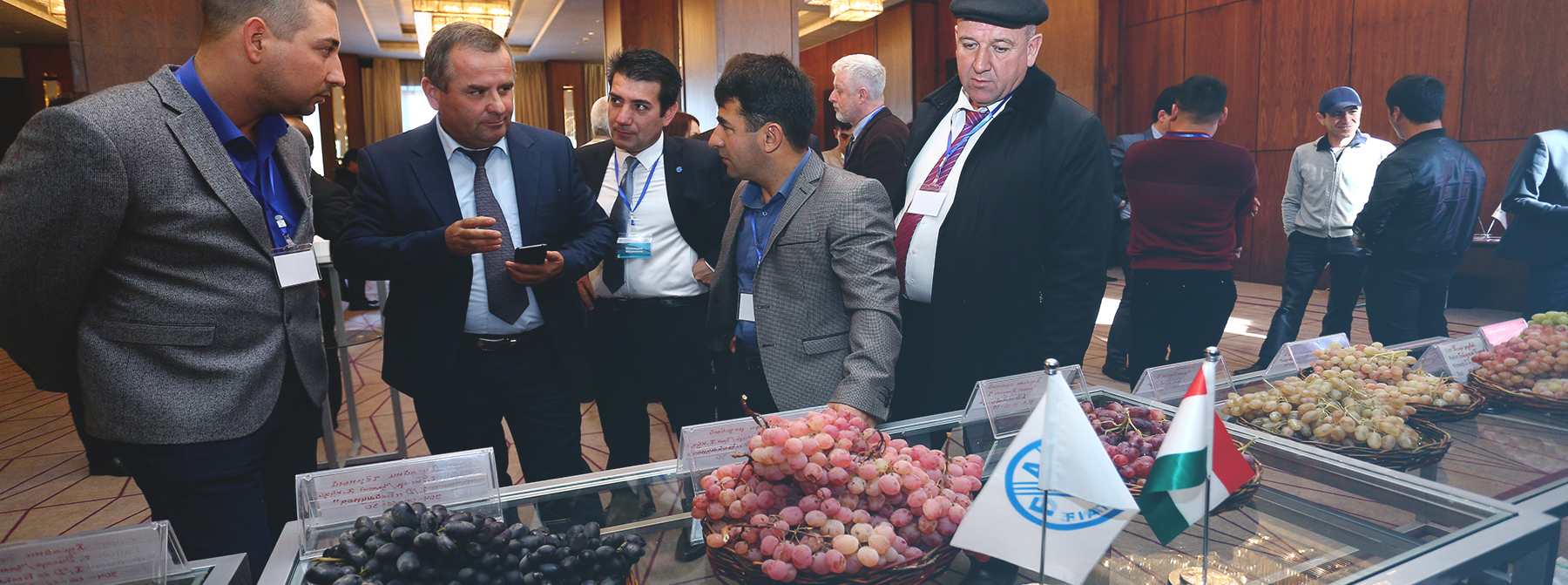The ripening of an industry

The table grape industries in Georgia, Moldova and Tajikistan could become more profitable and competitive by stepping it up – from investing in new varieties and production techniques to improving quality and marketing.
Those were the main messages from a series of events organized by the European Bank for Reconstruction and Development (EBRD) and the Food and Agriculture Organization of the United Nations (FAO) in each country in late 2018.
Local producers are now putting that knowledge to good use. They are using improved techniques to protect their crops as well as drip irrigation for greater water efficiency. They also have a better understanding of the market potential for different grape varieties and the need to invest in proper cold storage, packaging and logistics.
The events were part of a larger EBRD and FAO initiative aimed at supporting producers in various horticulture value chains, including berries, apples and pears, in the three countries.
Solutions and improvements
Although the prices and quality of table grapes in Georgia, Moldova and Tajikistan are low, FAO economist Andriy Yarmak explained that each country is grappling with very different challenges.
“Moldova is already a large exporter but faces serious competition in the low-price segment in Russia from Tajikistan and Uzbekistan and needs to move into high value segments, adopt new varieties and find new markets if its producers are to achieve higher prices,” he said.
Indeed, Moldova has already made impressive strides in the last five years, more than doubling its exports of table grapes and becoming the largest exporter in the region.
If Moldovan producers were to improve the quality of their grapes, it is estimated that they could expect a more than five-fold increase in annual export revenues – from USD 40 million to USD 200 million.
According to Nemanja Grgic, Principal Manager, Agribusiness Advisory at the EBRD, by channeling investments into modernizing operations, diversifying production and improving quality along the supply chain, “local producers and agribusinesses could boost their competitiveness and profitability, contributing to more inclusive economic growth.”
This was a sentiment echoed by Gheorghe Crețu, a small farmer in Moldova with four hectares of table grapes: “We now see an opportunity to diversify into seedless grape varieties, which would likely fetch us higher prices.”
Georgian farmers, on the other hand, could expect an additional USD 50 million in revenues if the country – a net importer of table grapes – were to meet local demand. Yarmak explained that while Georgia is advanced in wine, it has “a very limited production of table grapes and needs to build the industry almost from scratch.”
The country does have favourable growing conditions, particularly in areas popular with tourists. And given that Georgia welcomes around eight million tourists each year, that could be an interesting market to tap.
One attractive investment, touted at the Georgian event, was tunnels that would extend the growing season, allowing producers to grow early grape varieties well into the tourist season.
Severian Gvinepadze, Principal Manager at the EBRD in Georgia, said that “improvements in post-harvest handling procedures would also lead to increased revenues from high value crops, and their exports would allow agribusinesses to make new investments in processing operations, as well as wholesale and retail trade.”
Tajikistan, according to Yarmak, “is losing its traditional markets as customers are looking for newer, larger, seedless grape varieties. Farmers need to adopt new varieties and learn new packaging and marketing methods if they are to move out of the low-price segment and achieve higher prices for their grapes.”
Targeting new markets
In addition to low productivity, links with large importers and retailers are not well developed in each country and high standards often not met. This prevents producers from adding value to their products. Gaining access to new markets, though, is crucial if producers are to achieve sustained revenue increases.
Moldova and Tajikistan, for example, are somewhat dependent on the Russian market for exports. Producers there are encouraged to diversify their export markets and increase local sales.
“The conferences have been useful in offering support to producers like me, particularly in identifying markets and marketing our products,” Crețu said.
The broader project
As part of the broader project, FAO and the EBRD will conduct value chain analyses to identify investment opportunities along the numerous selected horticultural value chains in all three countries.
Next on the cards: a conference on the efficiency of production and marketing of fruits and berries in Georgia is planned for 12th March 2019, followed by a series of trade conference bringing together producers from Georgia, Moldova and Tajikistan with actors from Russia and Ukraine to discuss trade opportunities, as well as a study tour.
For now, thanks to this latest round of training, table grape producers in each country have fresh ideas on how to diversify and become more competitive – and ultimately more profitable.
The EBRD’s Small Business Impact Fund (Italy, Japan, South Korea, Luxembourg, Sweden, Switzerland, Taipei China and the United States of America) supported the events in all three countries, while the European Union, through its EU4Business initiative, supported the Georgian event.
